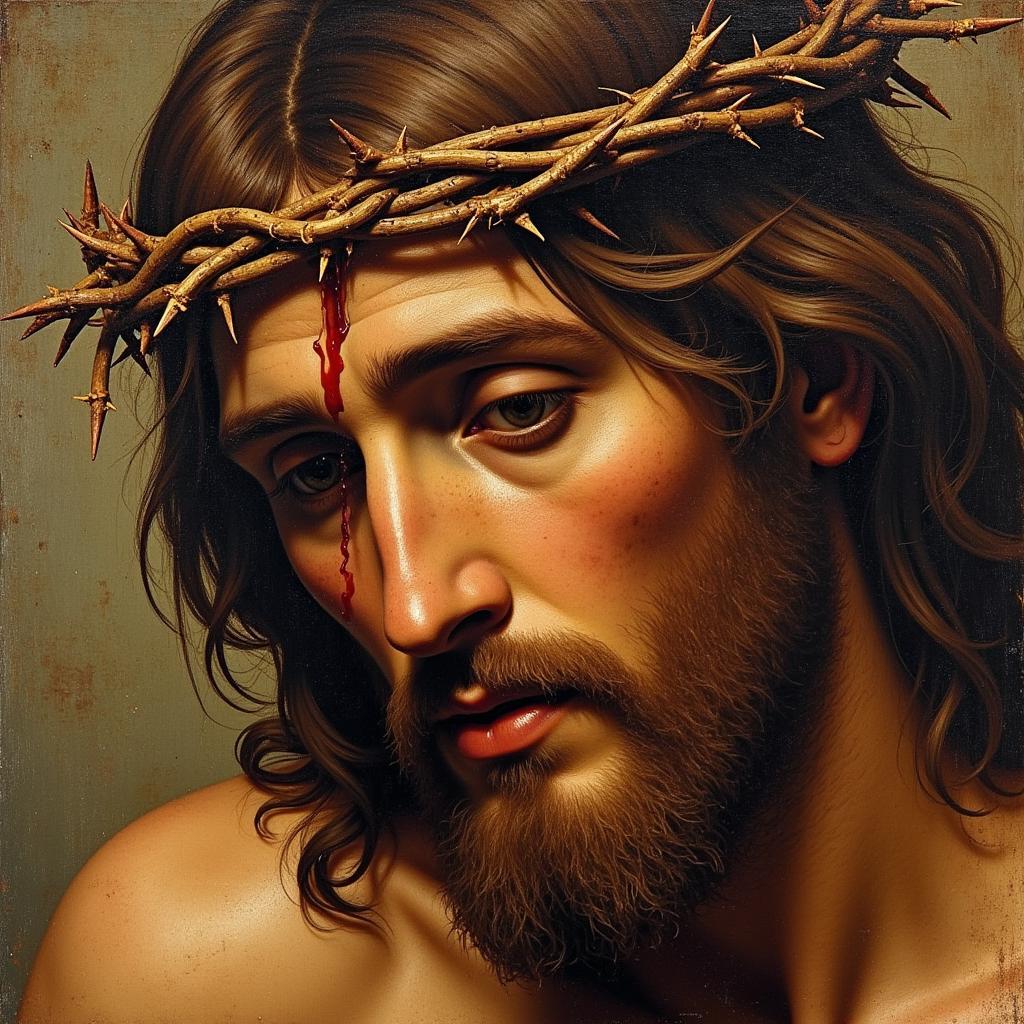Exploring the Profound Symbolism of Thorn Crown Art
Thorn Crown Art, a powerful and evocative subject, has captivated artists and viewers for centuries. It represents the suffering and sacrifice of Jesus Christ, making it a central theme in Christian iconography. From traditional paintings and sculptures to modern digital interpretations, thorn crown art continues to resonate deeply, inspiring reflection and contemplation on faith, resilience, and the human condition. See how artists across different eras and mediums have interpreted this iconic symbol, exploring its historical significance and evolving artistic representations. Let’s delve into the multifaceted world of thorn crown art.
The History and Significance of the Thorn Crown
The thorn crown, inextricably linked to the crucifixion of Jesus, is mentioned in the Gospels of Matthew, Mark, and John. It’s described as a woven crown of thorns placed on Jesus’ head by Roman soldiers, intended as an instrument of mockery and torture. This act, laden with symbolic weight, has become a potent representation of suffering, humiliation, and ultimately, redemption. Over time, the thorn crown has evolved into a powerful symbol of Christ’s kingship, juxtaposing earthly pain with divine glory. Understanding this historical context enriches the appreciation of thorn crown art and its enduring significance. It provides a foundation for exploring the diverse ways artists have interpreted this poignant symbol throughout history. You can find more religious art inspiration at Christ the King in art.
The depiction of the thorn crown has varied greatly across different artistic periods, reflecting the stylistic conventions and theological understandings of each era. From Byzantine mosaics to Renaissance paintings and modern sculptures, the thorn crown has been rendered with varying degrees of realism and emotional intensity. This evolution in artistic representation provides a fascinating lens through which to examine the changing cultural and religious landscape.
 Medieval Painting of Thorn Crown
Medieval Painting of Thorn Crown
Exploring Different Artistic Interpretations of the Thorn Crown
The thorn crown motif has been explored through various artistic mediums, each offering unique possibilities for expressing its symbolic power. Paintings, sculptures, engravings, and even digital art have all served as canvases for artists to convey their interpretations of the crown of thorns. The choice of medium often influences the overall impact of the artwork, whether it be the delicate lines of an etching or the imposing presence of a large-scale sculpture. Modern artists continue to explore this theme, pushing the boundaries of traditional representations and engaging with contemporary issues of suffering and resilience. Check out some related art pieces at Prince of Peace art.
The Thorn Crown in Painting and Sculpture
From the dramatic chiaroscuro of Caravaggio to the serene spirituality of Fra Angelico, painters have captured the emotional weight of the thorn crown in diverse ways. Sculptors, too, have embraced this powerful symbol, crafting three-dimensional representations that invite contemplation. The texture and form of the crown, rendered in materials like wood, bronze, or even thorns themselves, add another layer of meaning to the artwork. These tangible representations often create a visceral connection with the viewer, prompting deeper reflection on the physical and emotional suffering of Christ.
Contemporary Approaches to Thorn Crown Art
Contemporary artists continue to find new and innovative ways to interpret the thorn crown. Some embrace abstract forms and unconventional materials, while others explore the theme through the lens of social justice and contemporary struggles. This ongoing dialogue between tradition and innovation ensures that the symbolism of the thorn crown remains relevant and resonant in the modern world. By engaging with contemporary issues, artists breathe new life into this ancient symbol. Exploring arts and crafts windows might offer some interesting juxtapositions with this theme.
Why is Thorn Crown Art Still Relevant Today?
The enduring power of thorn crown art lies in its ability to connect with fundamental human experiences of pain, sacrifice, and hope. It serves as a reminder of the fragility of life, the inevitability of suffering, and the possibility of finding meaning and purpose even in the darkest of times. This timeless message transcends cultural and historical boundaries, continuing to resonate with viewers across generations.
- Symbol of Suffering and Resilience: The crown of thorns represents the immense suffering endured by Christ, but it also signifies his strength and resilience in the face of adversity.
- A Reminder of Sacrifice: The crown serves as a poignant reminder of the ultimate sacrifice made by Jesus for humanity.
- Symbol of Hope and Redemption: Despite the pain and suffering associated with the thorn crown, it ultimately points towards hope and redemption.
John Smith, renowned art historian, reflects on this, stating, “The thorn crown is not just a symbol of suffering, but a testament to the enduring human capacity for resilience and the enduring power of hope.”
Maria Garcia, a contemporary sculptor specializing in religious iconography, adds, “In my work, I strive to capture the raw emotion and spiritual significance of the thorn crown, connecting it to contemporary experiences of pain and resilience.”
Conclusion
Thorn crown art, a powerful symbol of suffering, sacrifice, and ultimately, redemption, continues to inspire and provoke reflection. From traditional representations to contemporary interpretations, this enduring motif offers a rich and multifaceted exploration of the human condition. Its continued relevance lies in its ability to connect with our shared experiences of pain, resilience, and hope. By exploring the various artistic representations of the thorn crown, we gain a deeper understanding of its profound symbolism and its enduring power to move and inspire. Perhaps exploring a seemingly different artistic style, like the arts crafts dining room table, can offer new perspectives on incorporating symbolic elements into everyday objects.
FAQ
- What is the significance of the thorn crown in Christianity?
- How has the depiction of the thorn crown evolved throughout art history?
- What are some common materials used in thorn crown art?
- How do contemporary artists interpret the thorn crown?
- Where can I find examples of thorn crown art?
- What other religious symbols are often depicted alongside the thorn crown?
- How does the thorn crown relate to other symbols of Christ’s passion?
Need more help? Contact us!
Phone: 02462573573
Email: danteum@gmail.com
Address: Savico Megamall, 7-9 Đ. Nguyễn Văn Linh, Gia Thụy, Long Biên, Hà Nội 10000, Việt Nam. We have a 24/7 customer service team.


